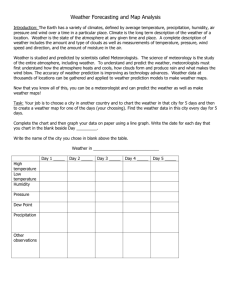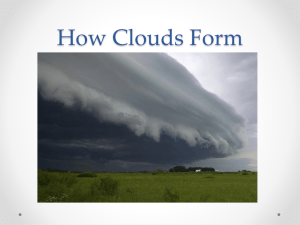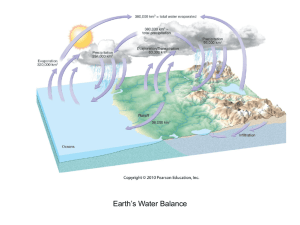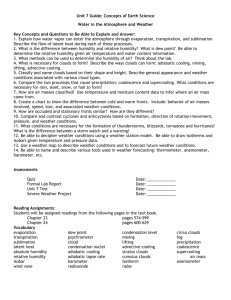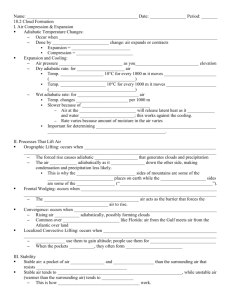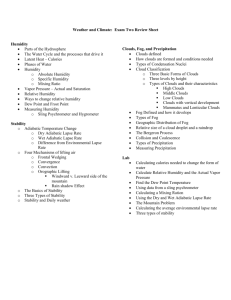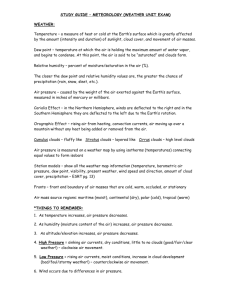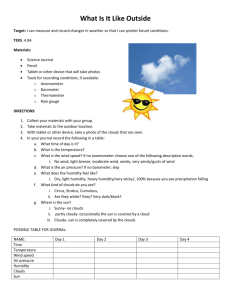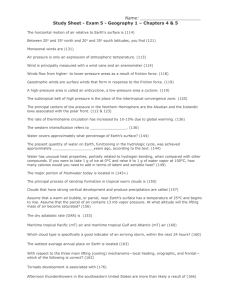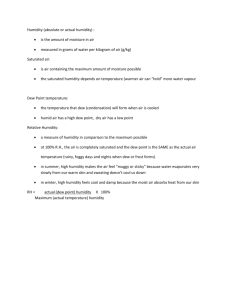Moisture, Clouds, Precipitation Review Sheet
advertisement
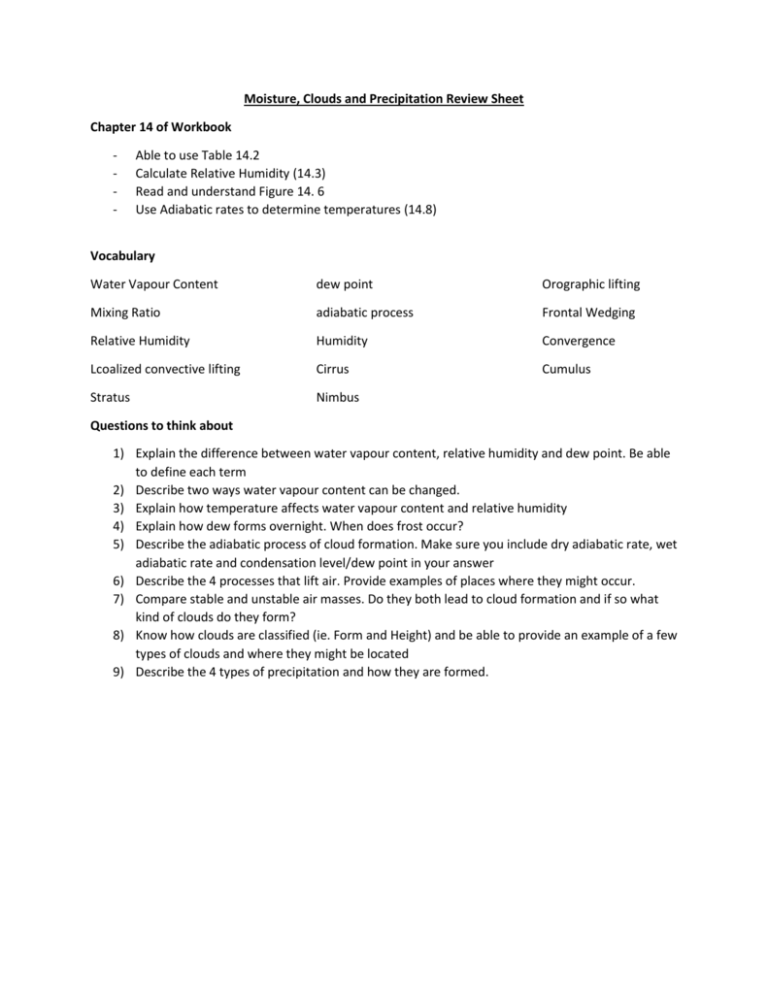
Moisture, Clouds and Precipitation Review Sheet Chapter 14 of Workbook - Able to use Table 14.2 Calculate Relative Humidity (14.3) Read and understand Figure 14. 6 Use Adiabatic rates to determine temperatures (14.8) Vocabulary Water Vapour Content dew point Orographic lifting Mixing Ratio adiabatic process Frontal Wedging Relative Humidity Humidity Convergence Lcoalized convective lifting Cirrus Cumulus Stratus Nimbus Questions to think about 1) Explain the difference between water vapour content, relative humidity and dew point. Be able to define each term 2) Describe two ways water vapour content can be changed. 3) Explain how temperature affects water vapour content and relative humidity 4) Explain how dew forms overnight. When does frost occur? 5) Describe the adiabatic process of cloud formation. Make sure you include dry adiabatic rate, wet adiabatic rate and condensation level/dew point in your answer 6) Describe the 4 processes that lift air. Provide examples of places where they might occur. 7) Compare stable and unstable air masses. Do they both lead to cloud formation and if so what kind of clouds do they form? 8) Know how clouds are classified (ie. Form and Height) and be able to provide an example of a few types of clouds and where they might be located 9) Describe the 4 types of precipitation and how they are formed.
